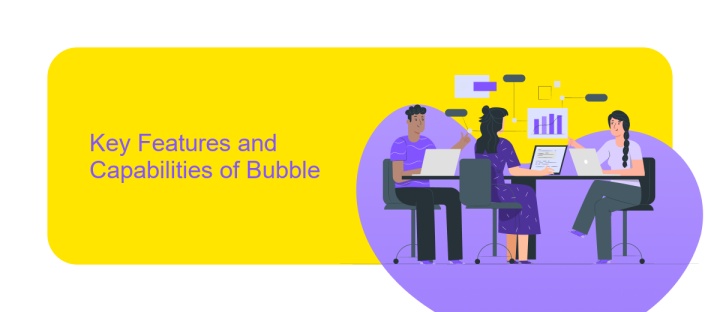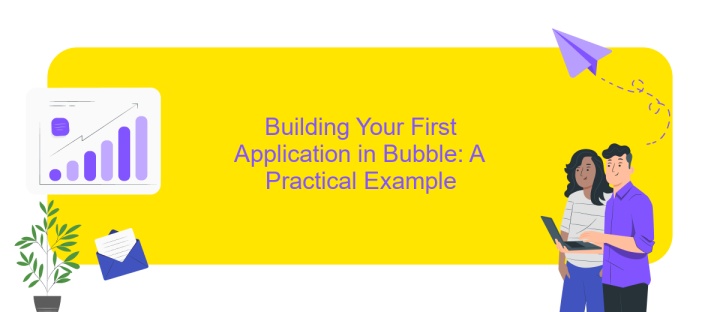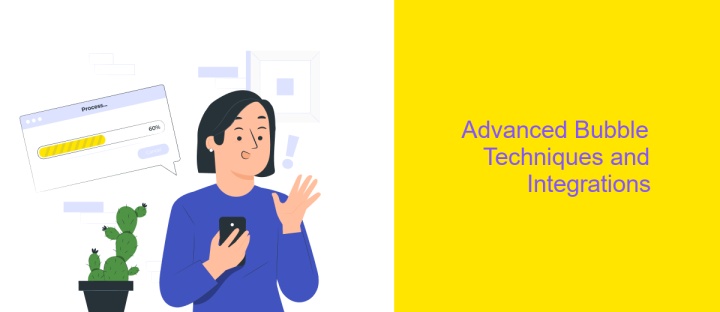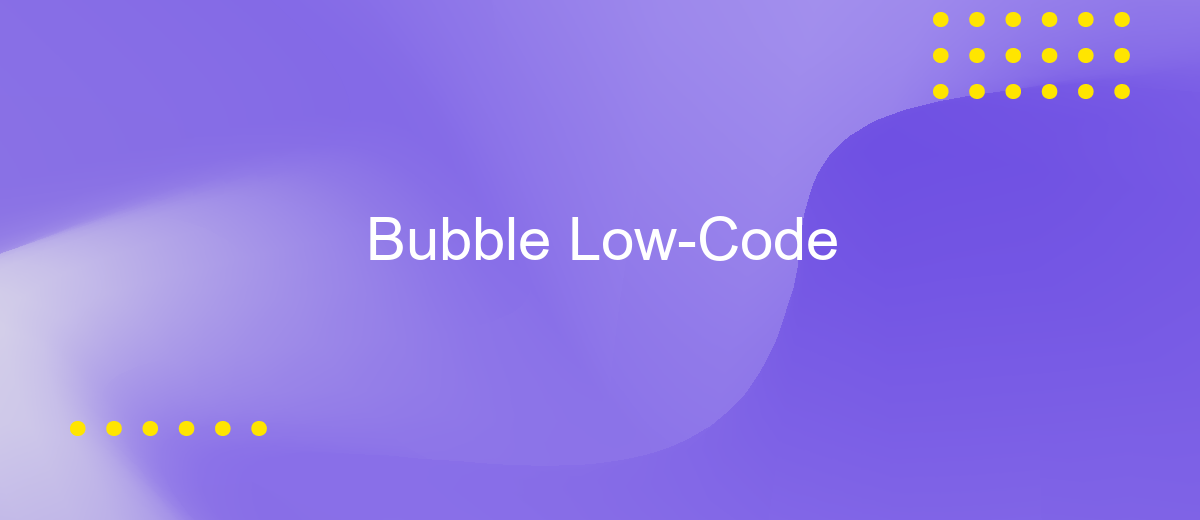Bubble Low-Code
Bubble is revolutionizing the way we approach software development with its powerful low-code platform. By enabling users to design, develop, and deploy web applications without extensive coding knowledge, Bubble democratizes app creation and accelerates the development process. This innovative tool empowers individuals and businesses to bring their digital ideas to life quickly and efficiently, breaking down traditional barriers in the tech industry and fostering creativity and innovation.
Introduction to Bubble and the Low-Code Movement
Bubble is a powerful platform that epitomizes the low-code movement, allowing users to build complex web applications without extensive coding knowledge. This revolution in software development empowers a wider audience to create digital solutions, democratizing access to technology. Bubble's intuitive drag-and-drop interface and visual programming environment enable users to design, develop, and deploy applications efficiently, reducing the time and cost traditionally associated with software development.
- Visual programming: Design applications with a user-friendly interface.
- Rapid prototyping: Quickly build and test ideas.
- Cost-effective: Reduce development expenses by minimizing the need for coding expertise.
- Scalability: Build applications that can grow with your business needs.
The low-code movement, exemplified by platforms like Bubble, is transforming the tech landscape by lowering barriers to entry for aspiring developers and entrepreneurs. It fosters innovation by enabling individuals and small teams to bring their ideas to life without the constraints of traditional coding. As more organizations embrace low-code solutions, the future of software development promises to be more inclusive, agile, and dynamic.
Key Features and Capabilities of Bubble

Bubble revolutionizes application development by offering a visual interface that allows users to design, develop, and deploy web applications without extensive coding knowledge. Its intuitive drag-and-drop editor empowers users to create complex, responsive designs effortlessly. With built-in database management, users can define and manipulate data structures directly within the platform, streamlining the development process. Bubble also supports custom plugins, enabling users to extend the platform's functionality to meet specific project requirements.
Integration capabilities are a standout feature of Bubble, allowing seamless connections with external services and APIs. This flexibility is enhanced by tools like ApiX-Drive, which facilitates the automation of workflows and data synchronization between Bubble and other platforms. Additionally, Bubble's robust version control system ensures that developers can manage changes effectively, maintaining project integrity. With a strong emphasis on scalability, Bubble supports applications of varying sizes, making it a versatile choice for startups and enterprises alike. Its comprehensive feature set positions Bubble as a powerful tool in the low-code development landscape.
Building Your First Application in Bubble: A Practical Example

Creating your first application in Bubble is an exciting journey into the world of no-code development. Bubble's intuitive platform allows you to design, develop, and deploy applications without writing a single line of code. To get started, all you need is an idea and a willingness to experiment.
- Sign up for a free Bubble account and create a new project.
- Familiarize yourself with the Bubble editor, which includes the design, workflow, and data tabs.
- Start by designing your application's user interface using Bubble's drag-and-drop elements.
- Define the data structure by creating data types and fields relevant to your app.
- Set up workflows to dictate how your application responds to user interactions.
- Test your application using the preview feature and make adjustments as needed.
- Once satisfied, deploy your application to share it with others.
By following these steps, you will have a basic application up and running in no time. Bubble's platform empowers you to iterate quickly, enabling you to refine your application based on real-world feedback. Dive in and start building your dream app today!
Advanced Bubble Techniques and Integrations

As developers delve deeper into Bubble, they discover a myriad of advanced techniques that can elevate their applications. One such technique is the use of custom states, which allows for dynamic data manipulation without constantly updating the database. By leveraging custom states, developers can create smoother user experiences and reduce server load.
Integrations are another powerful aspect of Bubble, enabling applications to connect with external services. Through APIs, Bubble apps can fetch and send data, allowing seamless interaction with other platforms. This capability opens up endless possibilities for expanding an app’s functionality beyond its native features.
- Utilize custom plugins to extend Bubble's capabilities.
- Implement API workflows for complex data processing.
- Integrate with third-party services like Stripe for payment processing.
- Use Bubble's responsive engine to optimize for all device sizes.
By mastering these advanced techniques and integrations, developers can create robust, scalable applications that meet diverse business needs. The flexibility of Bubble combined with its integration capabilities makes it a formidable choice for building sophisticated web applications without traditional coding.


Benefits and Limitations of Using Bubble
Bubble is an innovative low-code platform that empowers users to build web applications without extensive coding knowledge. One of the primary benefits of using Bubble is its user-friendly interface, which allows for rapid prototyping and development. This makes it accessible to entrepreneurs and small businesses looking to launch their products quickly. Additionally, Bubble offers a wide range of pre-built templates and plugins, enabling users to customize their applications to meet specific needs. Its visual programming interface simplifies complex workflows, reducing the time and effort required for development.
However, Bubble also has its limitations. While it offers flexibility, it may not be suitable for highly complex applications requiring intricate backend logic or real-time processing. Users may encounter scalability challenges as their applications grow, necessitating additional resources or migration to more robust platforms. Integration with other services can be streamlined using tools like ApiX-Drive, which facilitates seamless connectivity between Bubble and external applications. Despite these limitations, Bubble remains a powerful tool for creating functional web applications with minimal coding expertise.
FAQ
What is Bubble Low-Code, and how does it work?
Can I integrate third-party services with Bubble?
Is Bubble suitable for building scalable applications?
How secure are applications built with Bubble?
Can I export my Bubble application to another platform?
Time is the most valuable resource for business today. Almost half of it is wasted on routine tasks. Your employees are constantly forced to perform monotonous tasks that are difficult to classify as important and specialized. You can leave everything as it is by hiring additional employees, or you can automate most of the business processes using the ApiX-Drive online connector to get rid of unnecessary time and money expenses once and for all. The choice is yours!

